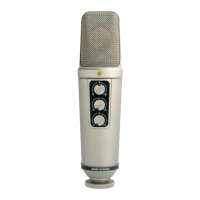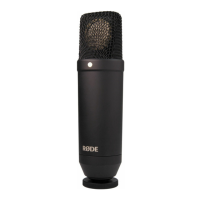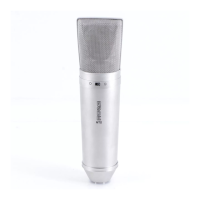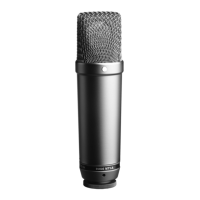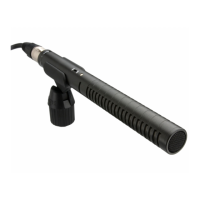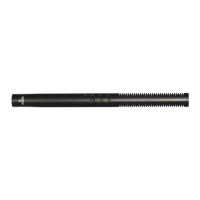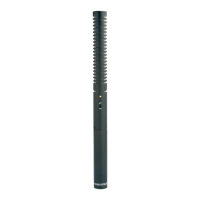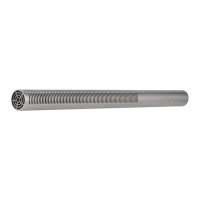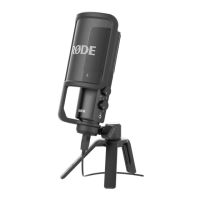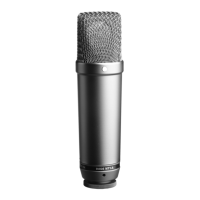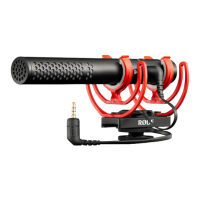Do you have a question about the RODE Microphones NT2-A and is the answer not in the manual?
Externally polarized 25 mm (1") dual diaphragm.
Multi-pattern selection, details available in graphs.
Covers the range from 20 Hz to 20 kHz, refer to graphs for details.
-36 dB re 1 Volt/Pascal (16 mV @ 94 dB SPL) +/-2 dB.
147 dB (@ 1% THD into 1 kΩ), 157 dB with -10 dB pad.
87 dB (per IEC651, IEC268-15).
Requires Phantom 48 Volts (P48 Standard).
Strongly recommended for vocal recording to prevent plosives and moisture.
Placement depends on vocalist's style; experimentation is key.
Increase in bass frequencies when close to the mic; useful for intimate vocal phrases.
Place mic approx. 200 mm above center, aimed towards the front.
Use two mics angled 90-110 degrees, one for low, one for high strings.
Place mic above kit center, height matching width, gold dot facing down.
Use mics similarly positioned, 1-2m apart, equidistant from snare.
Place mics 90-110 degrees apart, pointing downwards.
Place 20-30 cm from neck/body meet; adjust for desired tone.
Mount on shock mount, secure to stand, connect XLR cable securely.
Use quality short cables; position gold dot towards guitar.
Three polar patterns (Omni, Cardioid, Figure-8) controlled by top switch.
Most common for vocals; picks up from front, rejects rear.
Picks up sound from all around; less proximity effect, good for room mic.
Picks up from front/rear, rejects sides; ideal for interviews.
Experiment with settings for desired sound; allow 5-10 sec for stabilization.
Middle 3-position switch controls bass frequencies (bass-cut).
Center position offers full response with no bass frequency reduction.
Top position reduces level by 3 dB at 80 Hz and below.
Bottom position reduces level by 3 dB at 40 Hz and below.
Useful for cutting low frequencies or for vocal effects; listen while adjusting.
Bottom 3-position switch reduces input level to electronics.
Center position provides no reduction in recorded source level.
Top position lowers recorded source level by 10 dB.
Bottom position lowers recorded source level by 5 dB.
Reduces distortion for loud sources like drums or amplifiers.
Record and recall settings to recreate specific sound qualities.
Room acoustics and setup consistency are vital for replicating sound.
One-year warranty covering parts and labour for repairs.
Excludes defects from wear, tear, modification, shipping damage, or misuse.
Contact dealer first; factory service may require return organized by dealer.
RØDE Microphones Australia address, phone, and fax details.
RØDE Microphones USA address, phone (toll-free), and fax details.
Externally polarized 25 mm (1") dual diaphragm.
Multi-pattern selection, details available in graphs.
Covers the range from 20 Hz to 20 kHz, refer to graphs for details.
-36 dB re 1 Volt/Pascal (16 mV @ 94 dB SPL) +/-2 dB.
147 dB (@ 1% THD into 1 kΩ), 157 dB with -10 dB pad.
87 dB (per IEC651, IEC268-15).
Requires Phantom 48 Volts (P48 Standard).
Strongly recommended for vocal recording to prevent plosives and moisture.
Placement depends on vocalist's style; experimentation is key.
Increase in bass frequencies when close to the mic; useful for intimate vocal phrases.
Place mic approx. 200 mm above center, aimed towards the front.
Use two mics angled 90-110 degrees, one for low, one for high strings.
Place mic above kit center, height matching width, gold dot facing down.
Use mics similarly positioned, 1-2m apart, equidistant from snare.
Place mics 90-110 degrees apart, pointing downwards.
Place 20-30 cm from neck/body meet; adjust for desired tone.
Mount on shock mount, secure to stand, connect XLR cable securely.
Use quality short cables; position gold dot towards guitar.
Three polar patterns (Omni, Cardioid, Figure-8) controlled by top switch.
Most common for vocals; picks up from front, rejects rear.
Picks up sound from all around; less proximity effect, good for room mic.
Picks up from front/rear, rejects sides; ideal for interviews.
Experiment with settings for desired sound; allow 5-10 sec for stabilization.
Middle 3-position switch controls bass frequencies (bass-cut).
Center position offers full response with no bass frequency reduction.
Top position reduces level by 3 dB at 80 Hz and below.
Bottom position reduces level by 3 dB at 40 Hz and below.
Useful for cutting low frequencies or for vocal effects; listen while adjusting.
Bottom 3-position switch reduces input level to electronics.
Center position provides no reduction in recorded source level.
Top position lowers recorded source level by 10 dB.
Bottom position lowers recorded source level by 5 dB.
Reduces distortion for loud sources like drums or amplifiers.
Record and recall settings to recreate specific sound qualities.
Room acoustics and setup consistency are vital for replicating sound.
One-year warranty covering parts and labour for repairs.
Excludes defects from wear, tear, modification, shipping damage, or misuse.
Contact dealer first; factory service may require return organized by dealer.
RØDE Microphones Australia address, phone, and fax details.
RØDE Microphones USA address, phone (toll-free), and fax details.
| Acoustic Principle | Pressure Gradient |
|---|---|
| Frequency Response | 20 Hz - 20 kHz |
| Max SPL | 147 dB SPL |
| Power Requirements | 48V Phantom Power |
| Output Connection | XLR |
| Type | Condenser |
| Polar Pattern | Cardioid, Omni, Figure-8 |
| Output Impedance | 100Ω |
| Equivalent Noise Level | 7dB(A) |
| Capsule | 1-inch gold-sputtered diaphragm |
| Sensitivity | -32dB ± 2dB re 1V/Pa (25.12mV @ 94 dB SPL) |
